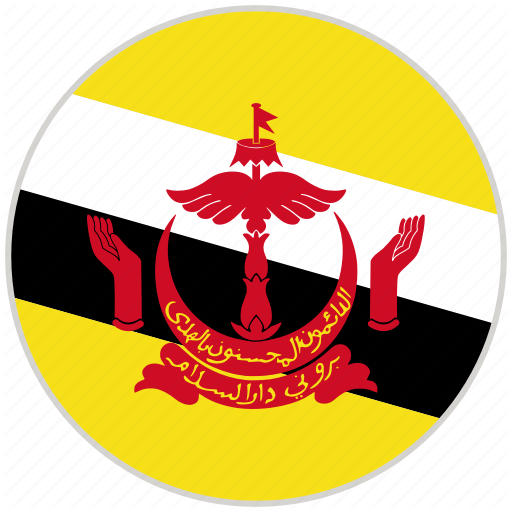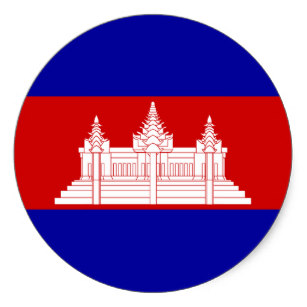Policy Recommendations
Introduction
1. The Network of East Asian Think Tanks (NEAT) held its 13th Country Coordinators Meeting (CCM) and the 8th Annual Conference (AC) on August 23-24, 2010 in Manila. The two events were attended by representatives of Think Tanks from the ASEAN Plus Three countries.
2. The NEAT reaffirms that the goal of community building in East Asia should be to promote the welfare and well-being of the people and realize the East Asian Vision of Peace, Prosperity and Progress. Community building should be based on universal values, including good governance, the rule of law,
democracy, human rights, and international law and norms. East Asian countries should promote these values as common goals.
democracy, human rights, and international law and norms. East Asian countries should promote these values as common goals.
Recommendations
3. NEAT respectfully submits recommendations in the following six areas for the serious consideration of the ASEAN Plus Three Summit.
-
Evolving Regional Architecture
-
Financial Cooperation
-
Trade and Investment Facilitation
-
Enhancement of Cultural Exchange through Education
-
Water Resource Management
-
Food Security
A. Evolving Regional Architecture
4. There is a distinguishable trend towards a multi-polar world with East Asia as the most dynamic economic region. The establishment of an East Asian community (EAc) will facilitate economic growth that is balanced, inclusive, and sustainable. ASEAN Plus Three process has become a major vehicle in moving
intraregional cooperation in East Asia forward. ASEAN Plus Three, therefore, remains relevant and important to East Asia’s evolving regional architecture and community building.
intraregional cooperation in East Asia forward. ASEAN Plus Three, therefore, remains relevant and important to East Asia’s evolving regional architecture and community building.
5. The following are key recommendations to promote the relevance of ASEAN Plus Three Cooperation in East Asia’s evolving regional architecture and roadmap towards an East Asian Community:
i. Reaffirm the long-term goal of building the EAc.
ii. The EAc should also be built upon the success of the ASEAN Community.
iii. East Asia community building should also reflect the multi-track and multi-speed approach to regional integration among countries in the region which results in a multi-layered and overlapping architecture.
iv. Existing fora/processes such as ASEAN, ASEAN+1, APT, EAS, ARF, APEC and ASEM should be strengthened and allowed to evolve since they each have their own merits and mandate.
v. ASEAN should be the core of this regional structure.
vi. The centrality and proactive role of the ASEAN as the primary driving force in this regional community building process of open regionalism should be maintained.
vii. Key features of the evolving regional architecture should be greater intra- regional trade and investment, enhanced financial cooperation, sustainable development, social and cultural exchange, and political and security cooperation.
viii. The East Asia Free Trade Area under the ASEAN Plus Three and the Comprehensive Economic Partnership of East Asia under the East Asia Summit should be considered in parallel as they can complement each other.
ix. East Asia should enhance political and security cooperation based on common values and shared interests.
x. East Asia should promote and advance political and security cooperation between ASEAN and its dialogue partners through the ASEAN Defense Ministers’ Meeting Plus.
xi. East Asia should promote cooperation in the area of non-traditional security issues which has been undertaken under the framework the ASEAN Ministerial Meeting on Transnational Crime Plus Three.
B. Financial Cooperation
6. Economic recovery after the 2008 global financial crisis was supported by a strong economic rebound in East Asia. Whether East Asia can sustain its growth and maintain its financial stability largely depends on how well the countries in the region can address challenges such as the uncertain economic recovery in the US and Europe, relocation of excessive and volatile liquidity towards East Asia, growing capital losses of foreign exchange reserves in the region and the unsettled agenda of international financial system reform. In this context, NEAT calls for a deepening of East Asian financial cooperation in the
coming years.
coming years.
7. The following are key recommendations to enhance East Asian financial cooperation:
i. Expand the functions of the to-be-established ASEAN Plus Three Macroeconomic Research Office (AMRO) over time so it becomes an effective surveillance unit to support economic review and policy dialogue (ERPD) in monitoring various economic and financial indicators, such as early warning system and Asian currency unit indexes, and producing regional economic surveillance reports, and eventually becomes an independent secretariat for the Chiang Mai Initiative Multilateralization (CMIM);
ii. Enhance the effectiveness and attractiveness of the CMIM by de-linking its loans with IMF conditionality over time, making the policy conditionality simple and focused, and introducing flexibility to CMIM lending to allow precautionary loans to a country which is not in a crisis but faces significant financial turmoil that could lead to a crisis;
iii. Take further steps to develop regional financial markets through the use of local currencies as alternatives to the US dollar for trade, investment and financial transactions in the region, including the issuance of local-currency denominated bonds by both public and private entities and increases in
weights of local currency assets in foreign exchange reserves in the region. To facilitate these efforts, set up a regional clearance and settlement mechanism for cross-border trading of local currency bonds, and launch an Asian Bond Fund 3 to enlarge corporate bond markets in the region with the
help of the newly established Credit Guarantee Investment Facility;
weights of local currency assets in foreign exchange reserves in the region. To facilitate these efforts, set up a regional clearance and settlement mechanism for cross-border trading of local currency bonds, and launch an Asian Bond Fund 3 to enlarge corporate bond markets in the region with the
help of the newly established Credit Guarantee Investment Facility;
iv. Create an Asian Financial Stability Dialogue as a high-level device for regional financial sector reform, regulation and integration among the East Asian financial authorities;
v. Prepare for regional exchange rate policy coordination to tackle the imminent problems of large inflows of international short-term capital, and subsequently, an exchange rate appreciation pressure, foreign exchange reserve accumulation, inflation, and asset price increases, as well as to facilitate global imbalance adjustment; and
vi. Aim to establish an East Asian monetary fund as an independent, legally binding organization built on the principles and rules agreed by the members, in order to facilitate economic policy coordination and promote regional economic and financial stability.
C. Trade and Investment Facilitation
8. Trade and investment facilitation (TIF) is a significant aspect of economic cooperation in East Asia. TIF can help reduce regional trade inefficiency, remove market access barriers, expand intra-regional demand, and solidify the foundation for East Asian economic development. It is also an effective way for East Asian countries to better adapt to the new external economic and trade environment in the post-crisis era. Priority should be given to areas where it is easier to achieve tangible results.
9. The following are key recommendations to strengthen East Asian trade and investment facilitation (EATIF):
i. Rationalize and harmonize the Rules of Origin (ROO) principles of the three 10+1 FTAs, to make the ROO more transparent, bring down transaction and administrative costs, and minimize the “noodle bowl” effect;
ii. Simplify and harmonize customs procedures of countries in the region to make them more transparent, encourage free flow of goods within the region, and improve the efficiency and quality of trade data collection. Pay particular attention to the latter as a way of optimizing the trade database
and providing the business sector with more accurate, compatible, convenient and timely information service;
and providing the business sector with more accurate, compatible, convenient and timely information service;
iii. Harmonize member countries’ domestic technical standards with international technical standards to allow the spread of best practice in technical regulation formulation and implementation, ensure transparency of standards and conformance measures, and facilitate the setting up of information sharing and consultation mechanisms to monitor and review the standards and conformance measures;
iv. Harmonize member countries’ rules and regulations on trade logistics in order to simplify the formalities for cross-border transport of goods; standardize transportation technologies; optimize infrastructure facilities; and raise speed and efficiency of regional trade logistics. At the same time,
promote regional connectivity in all modes by extending the ASEAN Connectivity Master Plan to reach out to the Plus Three countries;
promote regional connectivity in all modes by extending the ASEAN Connectivity Master Plan to reach out to the Plus Three countries;
v. Strengthen cooperation on visa application procedure and standardization for cross-border business movement;
vi. Introduce a quantitative assessment mechanism, including Key Performance Indicators (KPIs), regular reporting and independent assessment mechanisms. Define KPIs for each priority area in consultation with the successful practice of WB, APEC and GMS;
vii. Establish an EATIF Steering Committee, which will be responsible for translating the agreements of APT Summit and Ministers’ Meeting into specific action plans, facilitating communications and resources-sharing, monitoring and reviewing the cooperation process, updating the Economic
Ministers’ Meeting and Foreign Ministers’ Meeting with the latest developments, harmonizing individual countries’ efforts on TIF, and making policy recommendations; and
Ministers’ Meeting and Foreign Ministers’ Meeting with the latest developments, harmonizing individual countries’ efforts on TIF, and making policy recommendations; and
viii. Draft an EATIF Roadmap to be examined and finalized by the senior officials’ meeting and submitted to the APT Economic Ministers Meeting. At the national level, work out the individual countries’ TIF objectives and action plans accordingly, monitor and assess the implementation of action plans, and report the result to relevant APT ministers meetings.
D. Enhancement of Cultural Exchange through Education
10. East Asian countries have different cultures and traditions. Cultural exchange is therefore crucial to an enhancement of mutual understanding, solidarity and prosperity in the region. Cultural exchange through education is an excellent means of building an “East Asian identity”.
11. The following are key recommendations to promote cultural exchange through education:
i. Implement specific programs such as: (a) ASEAN Plus Three Student & Teacher Exchange Program (ASTEP), taking a cue from the Erasmus Program in Europe; (b) East Asian Education Council which will be tasked to manage overall education activities among East Asian countries; and (c) Asian Language Training Program (ALTP) with the view that language is the basic element of cultural understanding.
ii. Adopt specific measures such as the following: (a) Incorporate courses about East Asia in primary and secondary-level curricula; (b) Adopt Multicultural or Intercultural Literacy curriculum in order to achieve more effective cultural understanding; and (c) Encourage the forming of “research networks” in the area of education which will promote research on conditions and policies of cultural exchanges through education across East Asia.
E. Water Resource Management
12. Water-related challenges such as water shortages, flooding, contaminated water, poor sanitation and inaccessibility to safe drinking water affect in a varying degree, both developed and developing countries around the world. More and more countries recognize the importance of improving water resource management and are collaborating regionally and internationally to make it a reality.
13. The following are key recommendations to promote cooperation in water resource management among the APT countries:
i. Adopt a relevant set of water indicators and ensure consistent monitoring and reporting based on these indicators to help formulate better policies or programs;
ii. Devise a suitable and up-to-date regional database based on the relevant set of indicators in (i) to facilitate information and data sharing;
iii. Identify feasible water resource management projects at local levels in the APT countries (involving at least two APT countries and other interested partners) to be carried out over a reasonable time frame;
iv. Develop a long-term regional framework of water resource management encompassing and integrating all water sub-sectors;
v. Allow voluntary peer review of existing action plans in order to assess progress and identify problems;
vi. Publish information on best practices as well as challenges in implementing water resource management projects in the APT countries;
vii. Include in school curricula topics on environmental studies to enhance awareness among youths of the importance of water resource management;
viii. Look into climate change impact on water resources for appropriate adaptation measures;
ix. Adopt appropriate economic pricing policies to promote water conservation and more efficient allocation of this scare resource for different uses;
x. Involve relevant stakeholders beyond water professionals to ensure broad-based support for water resource management initiatives;
xi. Strengthen linkages and promote regular interactions among APT countries to better address water-related disaster risks management such as flooding and droughts;
xii. Build closer cooperation and coordination among the countries in the Mekong River Basin and other regional interested parties to better meet the challenges of water resource management; and
xiii. Establish a regional water fund to support water resource management activities and exchange of information, experience and knowledge as well as capacity building.
F. Food Security
14. The global food crisis in 2007 and 2008 is a stark reminder that food security is a top priority issue that has to be urgently addressed.
15. The following are key recommendations to ensure food security in East Asia:
i. Accelerate regional public investments in food sector in the infrastructure of the entire food supply chain including R&D to develop technologies to resist climatic change and environmental stress;
ii. Take stepwise approach towards the establishment of common regional food safety standards and/or regulations in order to improve national food safety first and integrate them with the regional/global system gradually. In the early stages of implementation, make such common regional standards, if needed, flexible and simple;
iii. Establish a clear mechanism in managing the regional rice reserves for emergency circumstances, and make it cost-effective and sustainable with stable financing arrangements among countries involved;
iv. Enhance a food security information system (AFSIS) to look at short-term and long-term food supply and demand situations and price fluctuations and projections;
v. Improve partnerships with private sectors to increase direct investments so as to create more job opportunities and thus contribute to economic development;
vi. Encourage exporting countries to harmonize themselves with international systems so that they can conform to the global standards and contribute to expanding international trade. While it takes some period to be able to follow them because of subsistent agricultural systems in the region, private food chain can play a critical role in introducing the standard through the setup of corporate standards or contract farming, in addition to public interventions;
vii. Integrate effectively efforts made by various organizations to tackle animal disease issue, which has become more and more critical as globalized economy prevailed in the region. In this connection, the region can learn a lot from Singaporean experiences as the quasi-perfect protecting system has been implemented there;
viii. Promote capacity building in the country where food safety has not yet been a prioritized policy target. Knowledge is not enough and infrastructure and technical facilities must be provided together to make the capacity building practical. The issue should be incorporated into the common umbrella of regional information exchange program. Specific areas of collaboration on this issue must be initially identified and studied by member countries.
Manila, Philippines
24 August 2010











.png)



.png)




